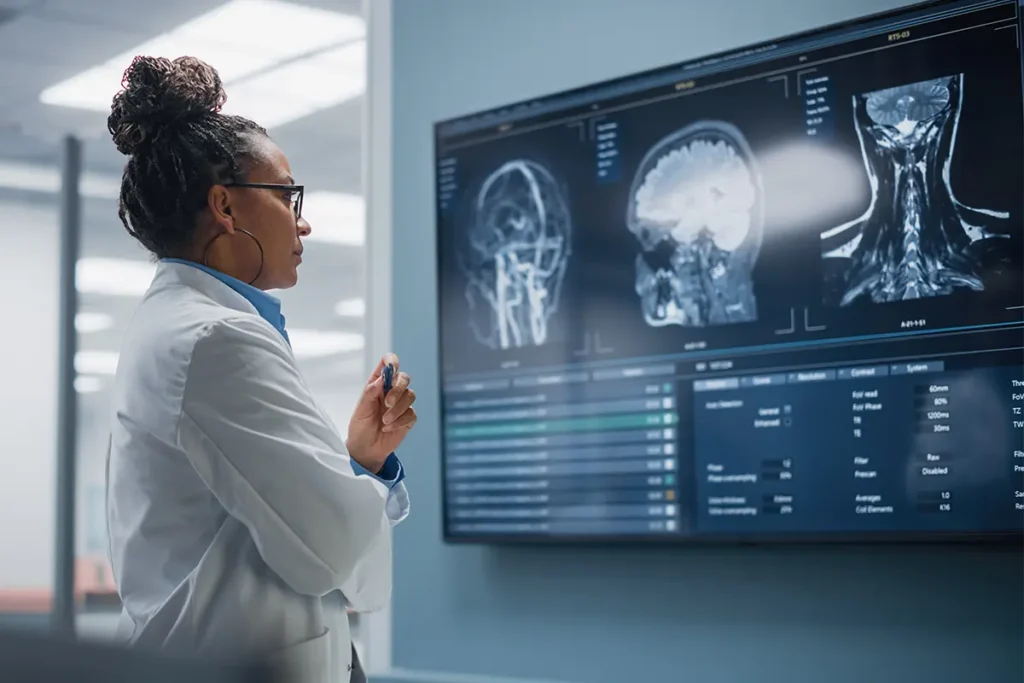5 trends that Will Dominate The Technology In Healthcare Sector

There has been a massive shift in how technology is integrated into the healthcare delivery continuum. Advances in digital healthcare technologies like AI, VR/AR, 3D-printing, robotics, and nanotechnology are reshaping the healthcare landscape right before our eyes. Healthcare professionals who want to remain relevant in the next few years will need to embrace developing healthcare technologies and work in tandem with them to enable a healthcare delivery system that is tech-led and human-enabled.
With new technology emerging every day in this sector, here are the top five trends that would dominate healthcare.
1) Expansion of Artificial Intelligence and Machine Learning
By facilitating data-driven clinical decision-making and optimizing healthcare system procedures, AI is one of the developments with the potential to have a major influence on this sector. In order to be effective, AI in healthcare must be designed with people in mind. Computer vision, natural language processing, and pattern recognition algorithms, all of which are linked with artificial intelligence, are now firmly ingrained in the healthcare ecosystem and will continue to be accepted as proof of their rising value in the coming years.
AI has proven useful in many areas like clerical tasks of managing or analyzing medical records and processing insurance claims. To give early warning or predictive diagnosis, it may also be used to analyze data gathered from patient wearables or in-home sensors used in virtual hospital environments (more on that in next trend). All of these applications combined point to artificial intelligence and machine learning becoming major healthcare trends in the future year.
2) Wearable Technology
One of the trends sweeping the business is the growing popularity of wearable healthcare devices. Health wearables allow for continuous monitoring of vital signs, allowing clinicians and patients to adopt a “proactive” rather than “reactive” approach to treatment. Additionally, cutting-edge software and technology in the field of digital health give key data and biomarkers on an individual basis, which is essential for illness prevention.
There will be a high demand for wearables in the future. This means that they will be equipped with processors and capable of utilizing in-device analytics rather than necessitating that data be sent back and forth between the device and the cloud in order to be processed. This will allow wearable medical devices to effectively monitor and treat patients.
3) Cloud Computing
There has been a rise in the accessibility of cloud computing in the healthcare sector. By using data that is remotely accessible, both doctors and patients will have quick and easy access to the most up-to-date clinical outcomes. In addition, the widespread use of EHRs will drive improvements in cloud technology’s cost-effectiveness and security while opening up new possibilities for big data applications. By using cloud computing, medical professionals may more efficiently scale the delivery of high-quality patient care, and individuals can take an active role in managing their own health.
4) Digitalization
Medical professionals and patients now have a more equitable relationship thanks to digitalization. The last ten years have seen fast integration of technology in a variety of sectors that support primary care and important public health responsibilities, and this trend is expected to continue. Searching medical information resources, simplifying clinical assistance, assessing the quality of treatment, mapping and monitoring the spread of infectious illnesses, and tracking the supply of pharmaceuticals and vaccinations are all frequent applications of digitalization in this setting.
5) Robotics
The use of robotics in the healthcare industry has advanced with time. This technology can have the potential to lessen the amount of labor needed in the healthcare sector. These devices are capable of performing a variety of jobs and support services, some examples include aiding in surgical procedures, enabling the transfer of patients, and distributing vaccinations to distant places.
The use of robots in the medical profession is revolutionizing the industry by making it easier to perform operations, reducing the time spent disinfecting equipment, and freeing up doctors’ schedules to spend more time with patients. Science offers a wide range of technologies for the creation of medical robots, including those used in surgical aid, modular design, and autonomous mobility. It’s certain to develop into a major area of study in the years ahead.
Finally, the healthcare business is experiencing a technological revolution, with many significant trends including those listed above. That’s the reason it’s incumbent upon healthcare industry executives to devise strategies for making every step of the patient’s care journey better, safer and more efficient.

Gaurav Jain
Senior Vice President, Clinical Support Solutions, IKS Health


